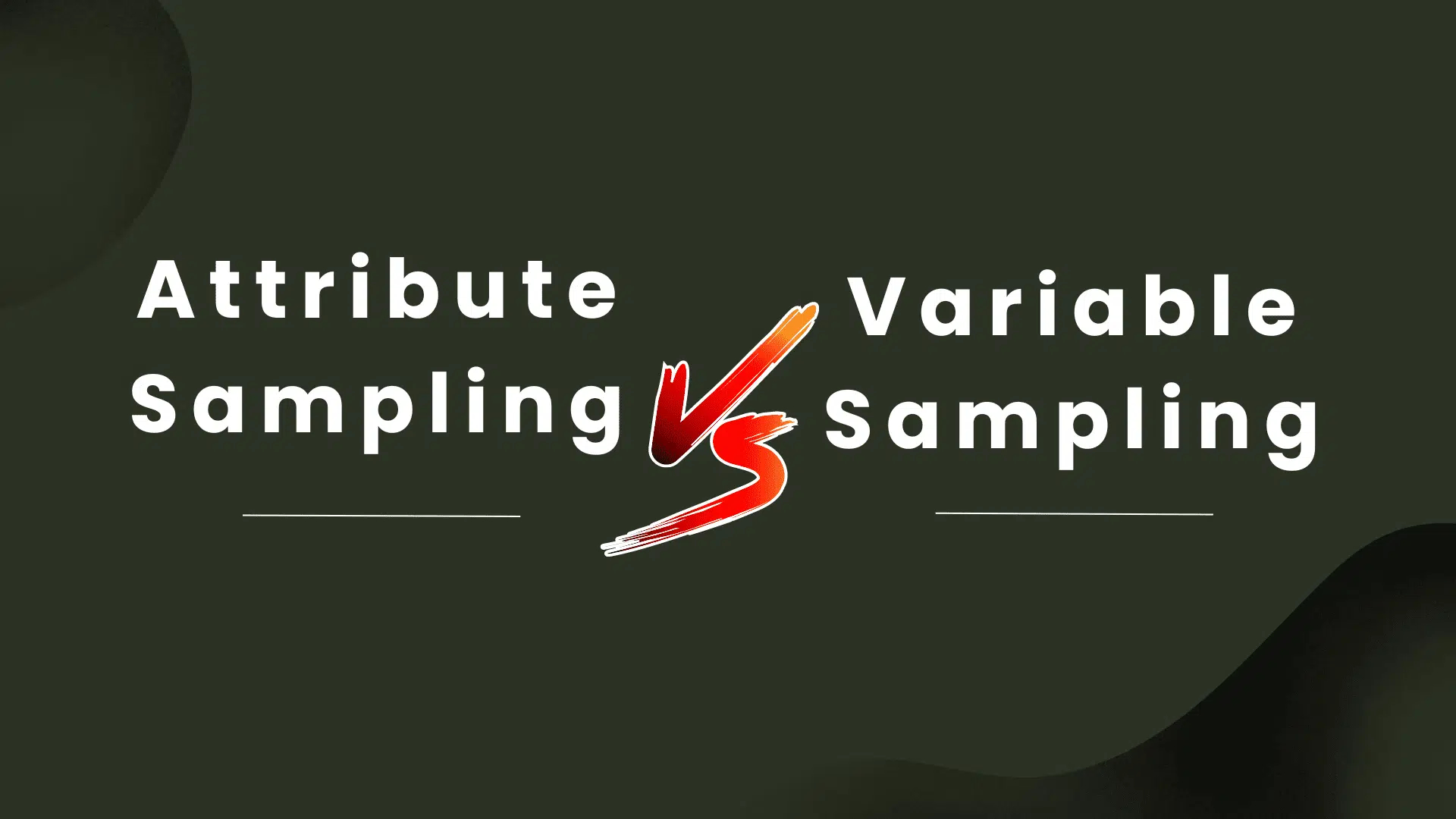Attribute sampling and variable sampling methods are used in quality processes to assess the characteristics of a product or process. Both techniques play key roles in ensuring product quality and process efficiency.
This article will discuss the fundamentals of attribute and variable sampling with their examples.
Attribute Sampling
Attribute sampling is a statistical method used in auditing and quality control to assess the quality of a batch of items or transactions by examining a sample.
An attribute sampling has data in attribute form, which means the result either conforms or doesn’t conform. This measuring method observes the presence or absence of certain features. It sees whether the item has a defect or not. In this case, the answer will be either “yes” or “no.”
Attribute sampling is useful when inspecting every item in a population is not feasible. By examining a representative sample, auditors and quality control professionals can make inferences about the entire population with a certain level of confidence.
Examples of Attribute Sampling
Now, we will see two examples of attribute sampling:
- Quality Control Inspection: In manufacturing, you will inspect a batch of products to determine whether they meet the defined quality standard. You will select a random sample instead of inspecting all products, and each product will be categorized as “acceptable” or “unacceptable.” This approach will help you assess batch quality based on the number of defective items in the sample.
- Compliance Auditing: You will use attribute sampling to assess compliance with regulations or standards. For example, in a financial audit, you can select a sample of transactions to determine whether they comply with the requirements. Each transaction in the sample is categorized as “compliant” or “non-compliant” and will provide organization compliance.
Variable Sampling
Variable sampling is another statistical method used in auditing and quality control to assess the quality or accuracy of a population. Unlike attribute sampling, which focuses on the presence or absence of a specific attribute, variable sampling evaluates the numerical characteristics or values of items in a population.
Like attribute sampling, variable sampling involves selecting a representative sample from the population and analyzing the sample data to conclude the entire population.
Variable sampling has data in variable form. It checks the result on a scale to measure the degree of conformity. The results can be “good,” “very good,” “excellent,” etc.
Examples of Variable Sampling
Now, we will see two examples of variable sampling:
- Opinion Polling: In political polling, variable sampling lets you estimate the proportion of voters who support a particular candidate. Instead of interviewing every single voter, you will select a random sample of voters and measure each respondent’s level of support on a numerical scale (e.g., from 1 to 5). By analyzing the sample’s responses, you can estimate the level of support for the candidate.
- Product Testing: You can use variable sampling to assess a product’s characteristics (e.g., weight, length, strength, etc.). For instance, when testing a new building material’s strength, you will select a random sampling of pieces and measure the strength of each sample using specialized equipment instead of testing each individual piece. The sample’s results can then be used to estimate the average strength of the production batch.
Summary
Attribute and variable sampling are key tools in quality assurance and control processes. Attribute sampling helps identify the presence or absence of specific characteristics, while variable sampling measures quantitative attributes.
Both measuring methods will help ensure that all products meet standards and all processes run efficiently.

I am Mohammad Fahad Usmani, B.E. PMP, PMI-RMP. I have been blogging on project management topics since 2011. To date, thousands of professionals have passed the PMP exam using my resources.







